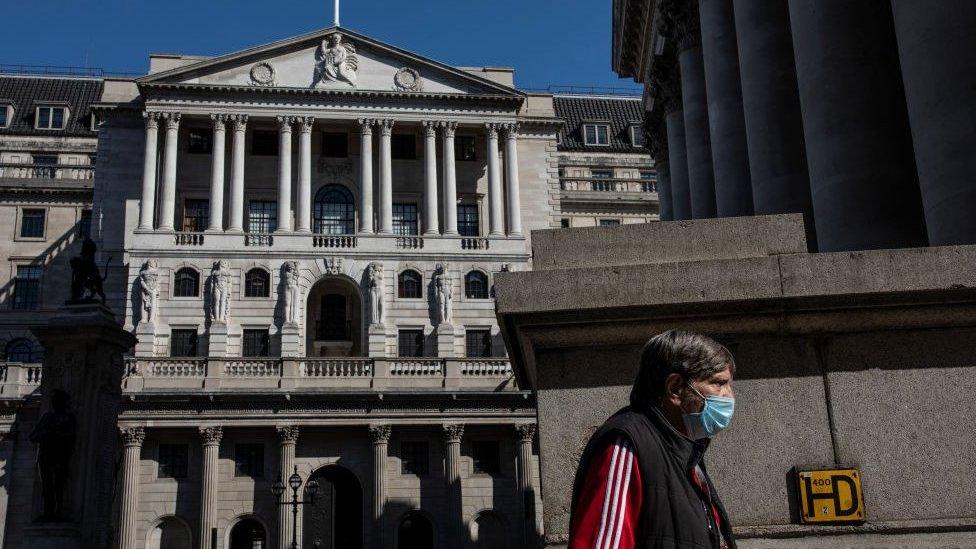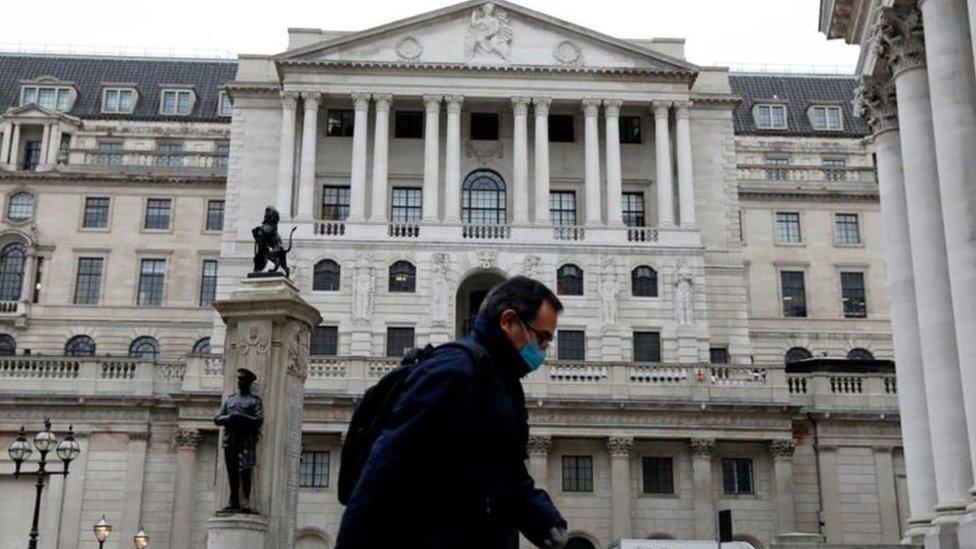Negative interest rates: Bank of England policymaker defends plan
- Published
- comments

A Bank of England (BoE) policymaker has defended the potential use of negative interest rates, which could take the cost of borrowing below zero.
Silvana Tenreyro told the Sunday Telegraph that evidence from other countries was "encouraging".
On Tuesday, the BoE governor played down the prospect of taking rates below zero, insisting it just needed to make sure it could do so if needed.
The Bank has so far responded to the pandemic by cutting rates to just 0.1%.
If interest rates are negative, the BoE charges for any deposits it holds on behalf of the banks. That encourages banks to lend the money to business rather than deposit it.
In an interview with the newspaper, Ms Tenreyro - an external member of the Bank's Monetary Policy Committee - said that evidence from other European countries and Japan suggested that negative interest rates had succeeded in cutting firms' borrowing costs and that banks would cope with the extra pressure on their finances, despite coronavirus.

What are negative interest rates?
The term "interest rates" is often used interchangeably with the Bank of England base rate.
Described as the "single most important interest rate in the UK", the base rate determines how much interest the Bank of England pays to financial institutions that hold money with it, and what it charges them to borrow.
High Street banks also use it to determine how much interest they pay to savers, as well as what they charge people who take out a loan or mortgage.
The Bank of England usually lowers interest rates when it wants people to spend more and save less.
In theory, taking interest rates below zero should have the same effect. But in practice, it's a bit more complicated.

"There has been almost full pass-through of negative rates into lending rates in most countries," Ms Tenreyro said.
She added that "banks adapted well" and that their profitability had increased where the policy had been introduced.
But earlier this week, BoE Governor Andrew Bailey played down the idea of taking rates below zero in the near future, and described the experience of other countries as a "mixed bag".
Mr Bailey said on Tuesday: "It would be a cardinal sin in my view if we said we had a tool in the box which we didn't think could be operationally used.
"Yes it's in the tool bag, but that doesn't mean we're going to use negative rates," he added.
The Bank said in August that it was taking a closer look at the case for cutting interest rates even further. In September it also said that it would take a detailed look at how negatives interest rates might work in practice during the last three months of the year.
It has already cut interest rates to 0.1%, a record low, and pumped billions of pounds into the UK economy in a bid to fight the coronavirus-induced downturn.
'Interrupted' recovery
Ms Tenreyro also said that the potential for more local lockdowns could, however, slow down or "interrupt" the UK's economic recovery.
She suggested it will be shaped like an "interrupted, incomplete V", at odds with other more upbeat forecasts.
Speaking on a British Chambers of Commerce web conference on Tuesday, Mr Bailey also urged caution over the "hard yards ahead" as the UK faces a rising number of Covid-19 infections.
He said: "The latest news, that we are seeing a very unfortunate, faster return of Covid-19, is extremely difficult news for all of us and the whole country.
"That does reinforce the downside risks we have in our forecasts.
"The Bank of England will do everything we can within our remit and powers to support the businesses and people of this country."
- Published17 September 2020

- Published2 September 2020
